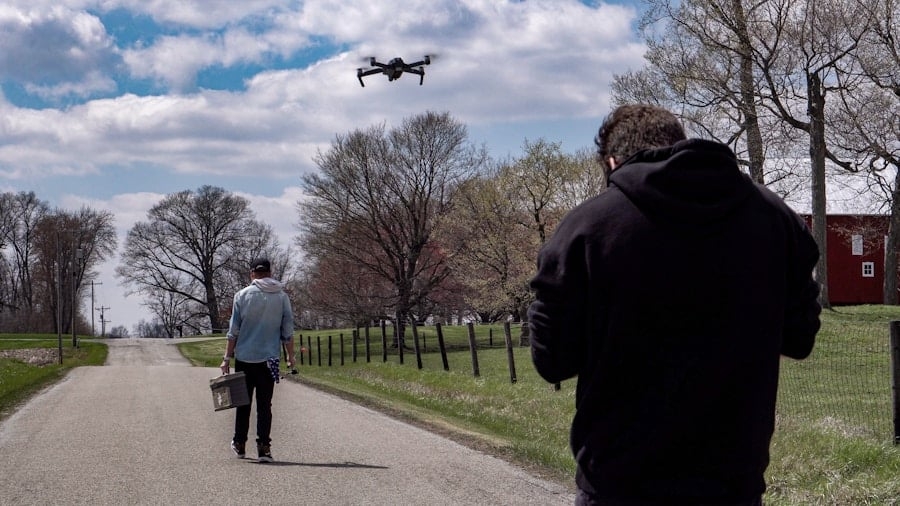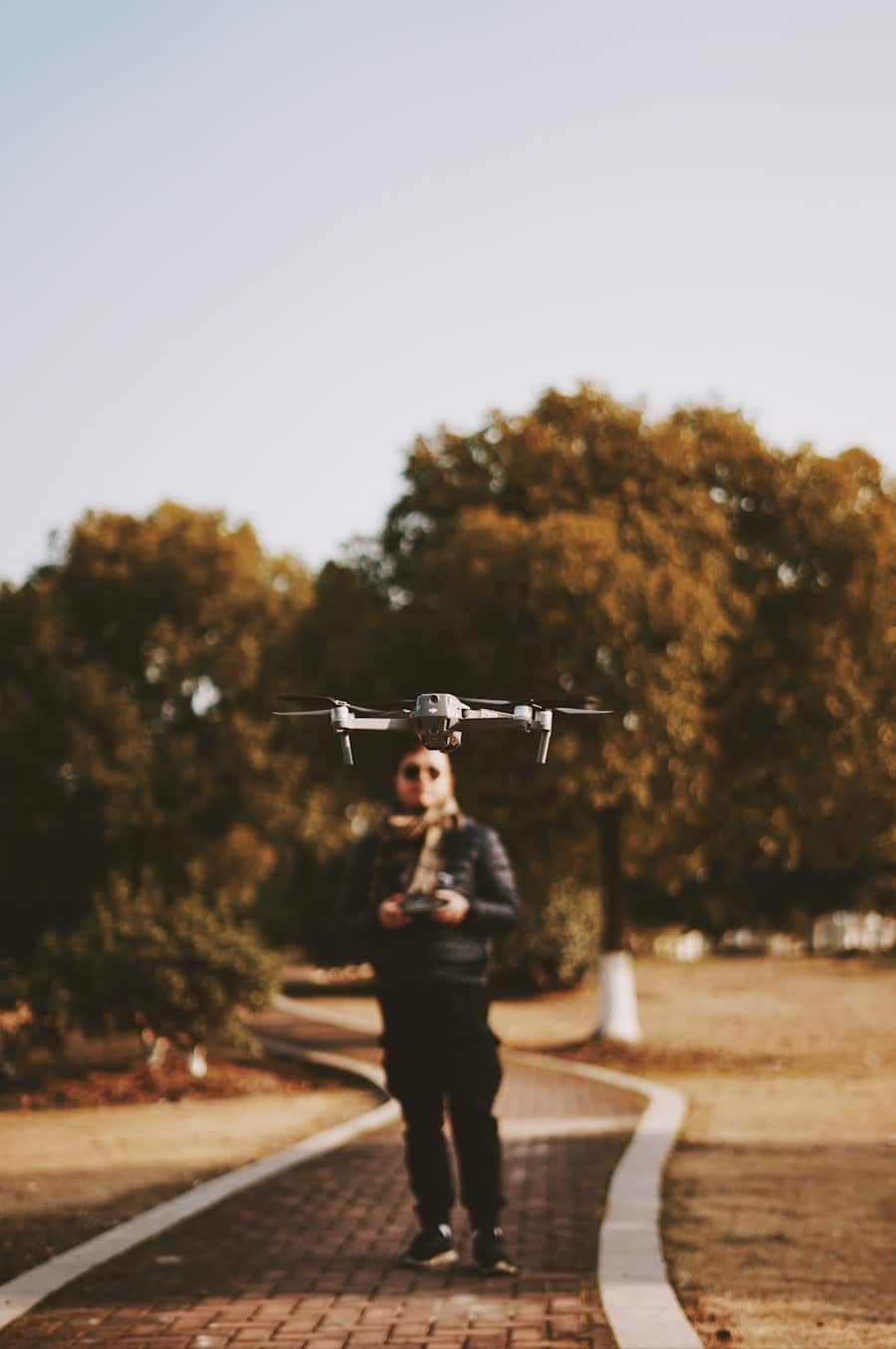In recent years, the advent of drone technology has revolutionized various sectors, including journalism. Drone-assisted livestreaming has emerged as a powerful tool that allows journalists to capture and broadcast events from unique aerial perspectives. This innovation not only enhances storytelling but also provides audiences with real-time coverage of events that may be difficult to access on the ground.
The integration of drones into the media landscape has opened up new avenues for engagement, enabling journalists to deliver immersive experiences that were previously unimaginable. The use of drones in journalism is not merely a trend; it represents a significant shift in how news is reported and consumed. With the ability to fly over crowds, capture sweeping landscapes, and provide dynamic visuals, drones have become indispensable in covering breaking news, natural disasters, and large-scale events.
As technology continues to advance, the capabilities of drones are expanding, allowing for higher-quality footage and more sophisticated livestreaming options. This evolution raises important questions about the implications of drone-assisted livestreaming for the future of journalism, particularly regarding its impact on storytelling, audience engagement, and ethical considerations.
Key Takeaways
- Drone-assisted livestreaming is revolutionizing journalism by providing unique and dynamic perspectives on events and breaking news.
- The impact of drone-assisted livestreaming on journalism includes enhanced storytelling, increased audience engagement, and improved access to hard-to-reach areas.
- Advantages of using drones for livestreaming include cost-effectiveness, flexibility, and the ability to capture footage from challenging angles, while limitations include privacy concerns, safety risks, and regulatory restrictions.
- Ethical considerations in drone-assisted livestreaming for journalism encompass privacy invasion, consent, and the potential for sensationalizing news events.
- Regulation plays a crucial role in ensuring the responsible and ethical use of drones for livestreaming in journalism, addressing safety, privacy, and airspace management concerns.
The Impact of Drone-Assisted Livestreaming on Journalism
Drone-assisted livestreaming has fundamentally altered the landscape of journalism by providing a new lens through which stories can be told. Traditional reporting often relies on ground-level perspectives, which can limit the scope and depth of coverage.
For instance, during natural disasters such as hurricanes or wildfires, drones can capture real-time footage of affected areas, allowing news organizations to convey the severity of the situation to their audiences more effectively. Moreover, drone-assisted livestreaming enhances audience engagement by offering a more immersive experience. Viewers can feel as though they are part of the action, witnessing events unfold from vantage points that would otherwise be inaccessible.
This immediacy can foster a deeper emotional connection to the story being told. For example, during protests or large public gatherings, drones can provide sweeping views of crowds and movements, helping audiences grasp the scale and intensity of the events. This capability not only enriches the narrative but also encourages viewers to engage with the content on a more personal level.
Advantages and Limitations of Using Drones for Livestreaming
The advantages of using drones for livestreaming in journalism are manifold. One of the most significant benefits is the ability to capture high-quality aerial footage that enhances storytelling. Drones equipped with advanced cameras can produce stunning visuals that draw viewers in and provide a unique perspective on events.
This capability is particularly valuable in covering large-scale events such as sports competitions or music festivals, where aerial shots can showcase the atmosphere and energy of the occasion. However, despite these advantages, there are limitations to consider when utilizing drones for livestreaming. One major challenge is the regulatory environment surrounding drone use.
Journalists must navigate complex laws and regulations that govern where and how drones can be flown. In many regions, restrictions may limit drone operations in urban areas or near sensitive locations such as airports or government buildings. Additionally, technical limitations such as battery life and signal range can hinder a drone’s ability to provide continuous coverage over extended periods.
These factors necessitate careful planning and consideration when incorporating drones into journalistic practices.
Ethical Considerations in Drone-Assisted Livestreaming
As with any emerging technology, drone-assisted livestreaming raises important ethical considerations that journalists must address. One primary concern is privacy. Drones have the capability to capture images and videos from heights and angles that may infringe upon individuals’ privacy rights.
For instance, using drones to film private property or individuals without consent can lead to significant ethical dilemmas and potential legal repercussions. Journalists must strike a balance between the public’s right to know and individuals’ rights to privacy, ensuring that their use of drones does not violate ethical standards. Another ethical consideration involves the potential for sensationalism.
The dramatic visuals captured by drones can sometimes overshadow the substance of a story, leading to a focus on spectacle rather than meaningful reporting. Journalists must remain vigilant against the temptation to prioritize eye-catching footage at the expense of accurate and responsible storytelling. This challenge underscores the importance of maintaining journalistic integrity while leveraging new technologies like drones to enhance coverage.
The Role of Regulation in Drone-Assisted Livestreaming for Journalism
Regulation plays a crucial role in shaping how drones are used in journalism. In many countries, aviation authorities have established guidelines that govern drone operations, including requirements for pilot certification, airspace restrictions, and safety protocols. These regulations are designed to ensure public safety while allowing for responsible drone use in various contexts, including journalism.
For instance, in the United States, the Federal Aviation Administration (FAA) has implemented rules that require drone operators to obtain a Remote Pilot Certificate and adhere to specific operational guidelines. Navigating these regulations can be challenging for journalists who wish to incorporate drones into their reporting. Compliance with legal requirements is essential not only for safety but also for maintaining credibility within the industry.
Journalists must stay informed about evolving regulations and best practices to ensure that their use of drones aligns with legal standards. Additionally, news organizations may need to invest in training programs for their staff to equip them with the necessary skills and knowledge to operate drones safely and effectively.
The Future of Drone Technology in Livestreaming
The future of drone technology in livestreaming holds immense potential for further transforming journalism. As advancements continue in areas such as artificial intelligence (AI), machine learning, and autonomous flight systems, drones are likely to become even more sophisticated tools for reporters. For example, AI-powered drones could analyze live footage in real-time, identifying key moments or trends that journalists may want to highlight during a broadcast.
This capability could streamline the reporting process and enhance the overall quality of coverage. Moreover, as 5G technology becomes more widespread, it will enable faster data transmission and lower latency for drone livestreaming. This advancement could facilitate smoother broadcasts with higher resolution video quality, allowing journalists to deliver even more engaging content to their audiences.
Additionally, innovations in battery technology may extend flight times, enabling drones to cover larger areas without interruption. As these technological developments unfold, they will undoubtedly shape the future landscape of journalism and redefine how stories are told.
Case Studies of Successful Drone-Assisted Livestreaming in Journalism
Several notable case studies illustrate the successful application of drone-assisted livestreaming in journalism. One prominent example occurred during the 2020 Black Lives Matter protests in various cities across the United States. News organizations utilized drones to capture aerial footage of large gatherings and demonstrations, providing viewers with a comprehensive view of the scale and intensity of the protests.
This approach not only enhanced storytelling but also highlighted issues related to police presence and crowd dynamics from an unprecedented perspective. Another compelling case study took place during natural disasters such as hurricanes or wildfires. In 2017, during Hurricane Harvey’s devastating impact on Texas, news outlets deployed drones to capture real-time footage of flooding and destruction.
This aerial coverage allowed journalists to convey the severity of the situation effectively while providing critical information about evacuation routes and emergency services. The ability to broadcast live from hard-to-reach areas helped inform viewers about ongoing developments and underscored the importance of timely reporting during crises.
The Potential of Drone-Assisted Livestreaming for the Future of Journalism
The integration of drone technology into journalism through livestreaming represents a transformative shift in how stories are reported and consumed. By offering unique aerial perspectives and enhancing audience engagement, drone-assisted livestreaming has become an invaluable tool for journalists seeking to convey complex narratives effectively. However, this innovation also brings forth ethical considerations and regulatory challenges that must be navigated carefully.
As technology continues to evolve, so too will the capabilities of drones in journalism. The potential for AI integration, improved connectivity through 5G networks, and advancements in battery life will further enhance how journalists utilize drones for storytelling purposes. Ultimately, drone-assisted livestreaming holds significant promise for enriching journalistic practices and expanding the horizons of news coverage in an increasingly visual world.
The article “New World of Possibilities with the Samsung Galaxy Chromebook 4” explores the innovative features and capabilities of the Samsung Galaxy Chromebook 4. This article discusses how this cutting-edge technology can enhance productivity and efficiency for users in various industries, including journalism. With its sleek design and powerful performance, the Samsung Galaxy Chromebook 4 could potentially revolutionize the way journalists gather and report news, especially when combined with drone-assisted livestreaming. To learn more about the Samsung Galaxy Chromebook 4, check out the article com/new-world-of-possibilities-with-the-samsung-galaxy-chromebook-4/’>here.
FAQs
What is drone-assisted livestreaming for journalism?
Drone-assisted livestreaming for journalism refers to the use of drones equipped with cameras to capture live footage of news events and broadcast it in real-time to a remote audience.
How is drone-assisted livestreaming currently being used in journalism?
Drone-assisted livestreaming is being used in journalism to capture aerial footage of events such as protests, natural disasters, and public gatherings. It provides a unique perspective and allows journalists to cover events from angles that were previously inaccessible.
What are the potential benefits of using drones for livestreaming in journalism?
Using drones for livestreaming in journalism can provide a more comprehensive and immersive coverage of events. It can also enhance the safety of journalists by allowing them to capture footage from a distance, especially in hazardous or inaccessible areas.
What are the challenges and limitations of using drones for livestreaming in journalism?
Challenges and limitations of using drones for livestreaming in journalism include regulatory restrictions, privacy concerns, and technical issues such as battery life and signal interference. Additionally, there is a learning curve for journalists to effectively operate drones and integrate the footage into their reporting.
What is the future potential of drone-assisted livestreaming for journalism?
The future potential of drone-assisted livestreaming for journalism is vast, with advancements in drone technology and regulations. It could revolutionize the way news events are covered, providing audiences with a more dynamic and in-depth understanding of unfolding stories.



